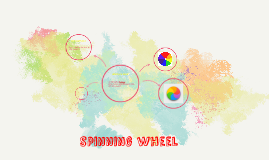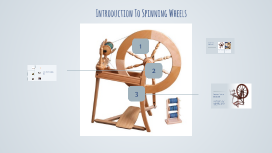Spinning Wheel
Transcript: Introduction To Spinning Wheels Introduction to Spinning Wheels 1 Understanding the Components Overview of Spinning Wheel Parts Introduction to Spinning Wheels The wheel is typicaly made from the wood of choice. Popular selections include: Oak, Cherry, Wallnut. A spinning wheel consists of several key parts, including the wheel, flyer, bobbin, and tension system. Spinning wheels are tools used for turning plant and animal fibers into yarn. The yarn can then be used to weave, knit, and crochet. The result, beautiful textiles from raw materials. The Flyer: Role in Yarn Production The Wheel: Function and Importance The big central wheel is the heart of the spinning wheel. It provides the necessary motion to power the spining wheels componates. Its size and design can greatly influence the spinning speed and tension, making it a crucial component. The flyer guides the fiber as it is twisted into yarn, maintining even tension. Its design and shape can vary, affecting the type of yarn produced and the overall spinning experience. 2 The Tensioning Systems: Controlling Yarn Gauges The Bobbin: Storing the Yarn Components of the Spinning Wheel The bobbin is where the finished yarn is wound, allowing for storage and handling. Its capacity and design can influence how much yarn can be produced before replacing the bobbin. The tensioning system is crucial for maintaining consistent yarn thickness, allowing spinners to create yarn that meets their target gauge. Adjusting the tension can also affect the twist, strenth, and overall quality of the yarn produced. The Peddle: Main Powersourse The Drive Band: Belt system The drive band connects the wheel to the flyer, transferring motion from the petal and powering the spin. Its material and tension can significantly impact the efficiency and smoothness of the spinning. The pedal mechanism on a spinning wheel provides the power to turn the large wheel. The up-and-down movement of the pedal turns into a rotary motion, causing the large wheel to spin. This synchronized interaction allows the fibers to be twisted into yarn while maintaining speed with the users peddling rythm. 3 Conclusion: The Art of Spinning Yarn The art of spinning yarn is a timeless craft that connects us to the natural world. By understanding the parts of a spinning wheel and their functions, we can appreciate the skill and creativity involved in transforming fiber into beautiful yarn.

















